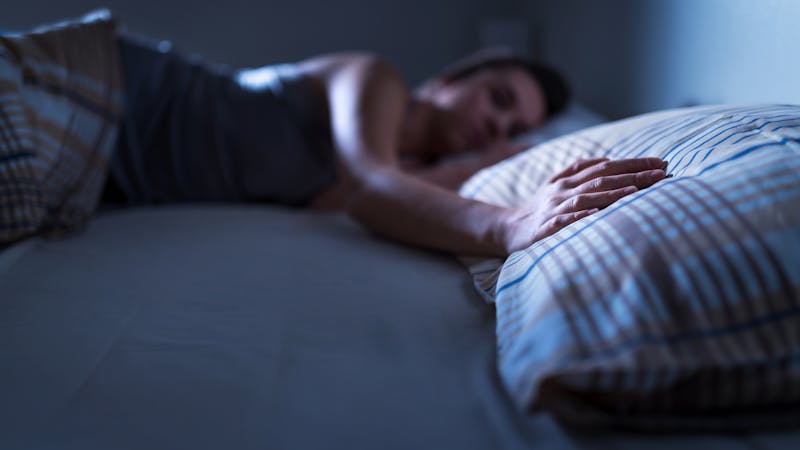How To Burn Belly Fat On Keto Diet
How to lose belly fat
- Why does belly fat matter?
- Nutrition
- Exercise
- Supplements
- Other lifestyle approaches
- Hormones
- Conclusion
Are you struggling to lose those extra pounds building up around your midsection? You certainly aren't alone. On any given day, nearly half of American adults are on a diet to lose weight, and only a minority succeed.1
Difficulty with losing weight is troubling, especially concerning belly fat, also known as visceral, abdominal, or truncal fat. Belly fat's impact is more serious than aesthetics. It's associated with metabolic disease, type 2 diabetes, and other serious health concerns.2
That may sound depressing, but with the right information, you can choose a diet that specifically targets this problem. This guide will explain all you need to know about belly fat and provide advice to help you get rid of it for good.
1. What is belly fat, why does it matter?

People tend to carry fat in two distinct ways: either under the skin (as subcutaneous fat) or in the abdomen and surrounding internal organs (as visceral fat). The latter is what is often referred to as "belly fat".3
How you carry fat is based on several factors: genetics, age, gender, and lifestyle all play a role.4 But the good news is that you can take control and lose unnecessary belly fat.
How to measure abdominal or visceral fat
A magnetic resonance imaging study (MRI) or CT scan are currently considered the gold standards for measuring visceral and abdominal fat.5 A DEXA scan, which uses a low dose x-ray beam produces similar results and may be more accessible. Other tests like bioimpedance scales are less accurate and provide less information about visceral fat, but are widely available.6
For those who don't have access to imaging tools, a simple technique is to measure your waist circumference. General recommendations are for men to keep their waist measurement below 40 inches (101 cm) and women to keep their measurement below 35 inches (89 cm). However, some ethnic groups, such as South Asians, have lower cutoffs of 35 inches (89 cm) for men and 31 inches (80 cm) for women.7
However, we suggest aiming for an even smaller waist circumference, such as 35 inches (89 cm) for all men and 31 inches (80 cm) for all women.8 Keeping your waist-to-height ratio below 0.5 may be an even better measurement for predicting a lower risk of health complications.9
| Low risk | Intermediate risk | High risk | |
|---|---|---|---|
| Waist-to-height ratio | <0.5 | 0.5-0.6 | >0.6 |
Measuring your waist allows you to keep track of your results and follow your progress. It can help you determine if your eating plan is helping you reduce your risk of chronic disease.
If you're losing weight but not reducing your waist measurement — or belly fat — you may want to change your weight loss methods.
You can also measure your hips and calculate your waist-to-hip ratio (waist measurement divided by hip measurement). The target for men is 0.9 and for women it's 0.8.10
Do you want to learn more about how to accurately measure your waist circumference or hip to waist ratio?
Why does belly fat matter?
Abdominal fat is associated with an increased risk of several health conditions, including:11
- metabolic disease12
- type 2 diabetes13
- heart disease14
- inflammation15
Belly fat is even associated with a shorter life.16 Even "normal weight" people, as defined by BMI, with extra belly fat are at increased risk of health complications.17
As we saw in 2020, more visceral fat is associated with a higher risk of severe Covid-19 complications.18
Fortunately, excess belly fat can be reduced. Studies show that reducing it improves metabolic health and is likely to improve overall health.19
But not all weight loss leads to a reduction of abdominal fat. In one study, people who did a 10-day fast lost weight, but they lost mostly lean body mass, not fat. The participants eating a ketogenic diet lost fat mass without losing lean body mass. However, the study didn't report how much of this fat loss was abdominal or visecral fat.20
Summary
Belly fat, also known as abdominal or visceral fat, is associated with an increased risk of multiple health conditions. Imaging tests, like DEXA scans or MRIs, are most effective for measuring belly fat, but simple techniques like waist circumference or waist to hip ratio are also very useful. Fortunately, lifestyle changes can decrease belly fat and improve overall health.
2. Nutrition
Any weight loss method may reduce belly fat to a degree. But what intervention helps reduce abdominal fat the most?
Low-carb nutrition
Low-carb nutrition lowers insulin, improves metabolic syndrome, and can reverse type 2 diabetes. It can also help people lose belly fat.21
In 2019, researchers from Virta health published a two-year study on the keto diet and reported a 15% reduction in abdominal fat.22
Other studies show a low-carb diet leads to greater loss of abdominal fat than a low-fat diet, although since they also lead to greater overall weight loss, it isn't clear that they specifically targeted abdominal fat.23
In one study, low-carb dieters lost 22.8% of their abdominal fat, compared to only 1% for the low-fat dieters, again with greater overall weight loss.24
And another study reported an 11% reduction for low-carb eaters compared to a 1% reduction for low-fat dieters.25

A low-carb diet for beginners
Calorie restriction
Other methods of weight loss may also help people lose belly fat. One randomized trial reported that 12 weeks of calorie restriction reduced fat mass by 11 pounds (5 kilos) and visceral fat by 16%.26
However, as with most eating plans, other studies question the sustainability of these diets and results. One randomized trial using a low-fat, calorie-restricted diet reported that at eight years, the dieters lost only 4.4 pounds (2 kilos), almost all from lean mass rather than fat mass.27
An interesting randomized trial revealed that after one year, exercise without calorie restriction led to the same reduction in belly fat as a diet with 20% fewer calories.28
Vegan diets
In a recent 16-week trial, 122 overweight adults who ate a low-fat vegan diet lost an average of nearly 14 pounds (6.4 kilos), reduced their body fat by 10%, and became more insulin sensitive. The control group continued their standard diet and did not see any significant changes.29
Another 16-week trial reported those following a vegan diet lost 9.5 pounds (4.3 kilos) of fat mass, some of it from visceral fat, whereas those on the control diet did not lose any.30
Vegan diets do not provide all the essential nutrients that humans need, therefore they require ongoing supplementation. The needed supplements are usually widely available making supplementation a fairly easy process for most.31
Some may also find it challenging to meet adequate protein needs on a vegan diet. Protein intake is especially important during weight loss to maximise loss of fat mass and minimize loss of muscle mass.32
Read more about low-carb vegan diets in our evidence-based guide.
Intermittent fasting
Intermittent fasting for beginners 
One study found that six weeks of alternate-day fasting led to a 7% overall weight loss with a visceral fat loss of 5.7%.33
Another randomized trial reported more significant fat mass loss with intermittent fasting than traditional dieting. Although they did not report specific abdominal fat loss.34
But not all studies agree. One trial of alternate-day fasting reported no change in visceral fat.35 This trial had subjects eat 25% of their usual calories one day and 125% the next day. This unusual protocol may have influenced the results.
People can combine intermittent fasting with any diet, so it's a versatile option available to people with different food preferences.
Summary
Nutrition plays a vital role in reducing abdominal fat. Many diets that promote weight loss can help people lose belly fat. However, low-carb diets may be the most effective method, and studies show they may be more effective than low-fat diets. Intermittent fasting is another promising option.
3. Exercise

One common misconception is that doing stomach strengthening exercises, like crunches or sit-ups, helps people lose belly fat. But studies show that sit-ups alone are not effective at reducing belly fat.36
Other types of exercise, especially when combined with an effective diet, may reduce belly fat. For instance, two trials reported high-resistance training and moderate-cardio programs had a greater impact on belly fat loss than lower-intensity exercise.37
And a study from Spain reported a more significant loss of total fat mass when the investigators added intense exercise to a low-calorie diet.38
Aerobic training alone may also be effective for visceral fat loss, but the key seems to be the intensity. Only studies of moderate and high-intensity aerobic exercise find a meaningful impact on belly fat.39
Summary
To lose unwanted belly fat, exercise can be a helpful addition to nutrition. However, exercise intensity matters, with moderate and high intensity aerobic or resistance exercise showing the best results.
4. Supplements

If you believe the ads, there are hundreds of "belly busters" or products that will help the fat "melt away from your middle." While most of these are ineffective, some supplements may help.
Green tea
One randomized trial reported a small benefit in abdominal-fat loss for a group randomized to a green tea extract when compared to a caffeine control group.40 Since the difference was small and this was just one study, you shouldn't expect green tea to be a magic potion for belly-fat loss. But it may be an added bonus when combined with nutrition, exercise, and other lifestyle improvements.
Probiotics
A randomized study reported that those supplementing with Lactobacillus amylovorus experienced a small decrease in abdominal fat compared to those eating yogurt made with other bacterial strains.41
However, there's still much to learn about our gut flora's impact on weight loss and body composition. The evidence is not strong enough to make a general recommendation about using probiotics to lose belly fat. But, if you choose to take probiotics for other reasons, you may want to consider strains with Lactobacillus amylovorus.
Apple cider vinegar
One study in Japanese men reported those who drank 0.5 to 1.0 ounces (15 or 30 ml) of vinegar decreased their waist size by about 0.5 inches in 12-weeks.42
You can read more about the potential health benefits of apple cider vinegar in our evidence-based guide. Again, the evidence isn't likely to be strong enough to recommend vinegar specifically for belly-fat loss. But if you are taking it for other reasons, you might see a small benefit.
Summary
Marketing for most supplements overstates their potential benefits to help people lose abdominal fat. Although the evidence is limited, some people may see a small effect from green tea, probiotics, or apple cider vinegar.
5. Other lifestyle approaches

You have likely heard about the importance of getting enough sleep and managing chronic stress. But can these healthy practices also help you lose belly fat? They might.
Elevated levels of cortisol, a hormone that your body produces when under stress, are associated with higher levels of abdominal fat.43
Fortunately, stress management can make a difference. It may help with weight loss and reduce both cortisol and abdominal fat.44
What about sleep?
One randomized trial reported that insufficient sleep reduced fat loss during a weight loss program.45
And another study reported that better sleep correlated with greater fat-mass loss.46 Plus, given all the other health benefits of better sleep, there are plenty of reasons to make it a priority.
Summary
Managing chronic stress and getting adequate sleep are two lifestyle interventions that may improve belly-fat loss. It's worth prioritizing them for general health.
6. The role of hormones in belly fat accumulation

Despite your best efforts to shed excess abdominal fat, you may find a more significant challenge as you age. When women go through menopause and men experience "andropause," sex hormones change in ways that can lead to more belly fat.
While menopause refers to a drastic decrease in women's estrogen levels, andropause refers to a more gradual reduction in testosterone for men.47
Studies show that women experience an increase in abdominal and visceral fat as they transition into menopause.48
This is likely related to the hormonal changes and the resulting decrease in energy expenditure and fat burning.49
However, it's not clear that hormone replacement by itself is adequate to reduce accumulation of abdominal fat. One randomized trial did not report any benefits in body composition with hormone replacement.50 But other observational trials reported women taking hormone replacement lost more abdominal fat than those not taking hormones, a finding that may be related to "healthy user bias."51
Studies also suggest that men accumulate proportionally greater amounts of abdominal or visceral fat with decreasing testosterone levels.52 Testosterone replacement therapy, when appropriately given in the setting of testosterone deficiency, appears to improve body composition with decreased fat mass, increased lean body mass, and specifically decreased abdominal fat.53
While we wouldn't recommend relying solely on hormone replacement for losing belly fat, addressing documented hormone deficiency along with nutrition and exercise may be a particularly effective method for reducing abdominal fat for those who have entered menopause or andropause.54
Read more about our top 8 tips to lose weight during menopause in our evidence-based guide.
Summary
Hormonal changes that come with age can predispose both women and men to excess accumulation of abdominal fat. For some people, hormone therapy may make it easier to lose unwanted belly fat with improved nutrition and exercise.
7. Conclusion
Abdominal or visceral fat is associated with significant health risks, including metabolic syndrome, type 2 diabetes, and heart disease.
Fortunately, you can lose stubborn belly fat with targeted lifestyle changes. A combination of low-carb nutrition, moderate to high-intensity exercise, and intermittent fasting can help you reduce the fat around your midsection.
You can learn more about losing weight from our Top 18 tips for weight loss guide. Or try our program Weight Loss for Good. Plus, if you want to set achievable goals, read our guide, Setting realistic expectations for weight loss before you start making changes.
How To Burn Belly Fat On Keto Diet
Source: https://www.dietdoctor.com/weight-loss/belly-fat





















